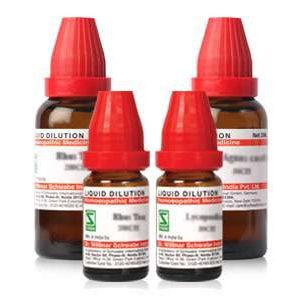
Hypoxemia – Causes, Symptoms, Diagnosis, Homeopathic Treatment
- Dr. Aditi Sharma
- May 4, 2022
- No Comments

Hypoxemia refers to the condition in which there are low oxygen levels in the arterial blood. The blood carries oxygen to different body parts to keep them healthy. The normal oxygen level in blood is 95% (spo2) or higher. In hypoxemia, the blood oxygen level drops to 92%or lower.
What are the signs and symptoms of hypoxemia?
The signs and symptoms of hypoxemia can be acute or chronic. They may also vary from mild to severe in intensity, depending on the oxygen levels in the blood. These are:-
- Shortness of breath
- Increased heartbeat
- Rapid breathing
- Coughing
- Wheezing
- sweating
- Confusion
- Inability to communicate
- Bluish discoloration of the lips , fingertips and skin
- Coma or even death
In children, symptoms of hypoxemia may include:-
- Irritability
- Anxiety
- Inattentiveness
- Lethargy
- Sitting up and leaning forward for better diaphragmatic breathing
- If there is epiglottitis or restriction in the airways there may be drooling and mouth breathing seen.
What are the causes of hypoxemia?
All the causes that can cause hypoxia at the level of environment or tissues can end up causing hypoxemia within the body
Some of the common causes of hypoxia are:-
- Gas or chemical poisonings such as carbon monoxide or cyanide poisoning
- Low or absent oxygen concentration in the environment as seen in aviation, mountain climbing fires and drowning
- Cardiac conditions such as heart defects, ventricular fibrillation or severe bradycardia.
- Anaemia and those conditions that reduce the number of red blood cells
- Lung problems such as bronchitis, emphysema, chronic obstructive pulmonary disease (COPD), pulmonary oedema, lung cancer, pneumothorax, pneumonia, inflammation and scarring of the lung tissue as seen in conditions such as pulmonary fibrosis, and asthma
- High altitudes where the oxygen level in the air we breathe is low
- Medications such as Strong painkillers, and narcotics impair the effort for breathing.
- Decreasing or even stopping the blood flow to the tissue and organs of the body as seen in cases of blockage of arteries by clot or injury.
- Impaired breathing during sleep or sleep apnea.
Also Read Asthma - Types, Risk and how homeopathy helps in dealing with it
How can hypoxemia be diagnosed?
The various tests done by the doctors to check the blood oxygen levels are:-
- Pulse oximetry- It is a painless and noninvasive method. In this, the doctors slip a sensor over the finger. This sensor measures the blood oxygen level. This test is routinely done by many doctors each time the patient visits the clinic.
SpO2 Chart Using Pulse Oximetry
| Condition | SpO2 Range |
| Normal | 95% to 100% |
| Brain Gets Affected | 80% to 85% |
| Cyanosis | 65% |
- Arterial blood gas test- It is an invasive procedure in which a needle is used to take a sample of blood from the artery to measure the oxygen level in the blood.
- Breath test- In this the patient breathes into the tubes which are connected to machines and computers.
- Pulmonary function tests– They are done in order to find the cause of unexplained low oxygen concentration.
What are the complications of hypoxemia?
Low or absent oxygen levels in the environment (environmental hypoxia), for example in high altitudes or cases of drowning, can result in hypoxemia. Within the body, this hypoxemia can cause hypoxia in the tissues and organs. The most severe of these complications is cerebral hypoxia, which can rapidly progress to brain damage and even death. There should be a minimum oxygen concentration of 19.5 per cent in the air we breathe for the body to function properly. Survival of human beings is impossible with oxygen levels at 6 % or lower.
What are the steps to prevent the occurrence of hypoxemia?
Hypoxemia can be prevented and the oxygen levels in the blood can be increased by taking the following steps:-
- Regular aerobic exercises such as walking, cycling, yoga, etc
- Eating a balanced and adequate diet
- Practising deep breathing exercises
- Consuming plenty of water regularly
- Quit smoking
- Avoiding exposure to an environment in which the oxygen concentration is not adequate.
- Regular intake of medications that ameliorate or prevent hypoxemia symptoms which are due to underlying medical conditions like COPD or asthma.
In addition to this hypoxemia can be prevented by recognizing the individuals who have a predisposition to developing hypoxemia and timely supplying them with oxygen via an oxygen mask or nasal cannula as soon as they develop early symptoms of hypoxemia.
What is the homeopathic treatment for hypoxemia?
Hypoxemia is treatable with medications. Depending on the cause of hypoxemia, treatment may be required once or on an ongoing basis. The first step is to immediately supply the individual with additional oxygen as early as possible. This is especially important in cases where cerebral hypoxia is suspected. For this, the following methods were used:-
- Nasal cannula
- A hyperbaric chamber is used in carbon monoxide poisoning to increase oxygen concentration in the blood.
- Intubation / mechanical ventilation to supply oxygen at higher than normal atmospheric concentration.
- Oxygen masks as used by airline passengers and mountain climbers to supply additional oxygen till they reach the point where oxygen concentration in the air is at a normal level (approximately 21%).
When supplying additional oxygen care has to be taken or else hyperoxia may develop which can be toxic to the tissues of the body. This can especially occur in long-term ICU patients or those undergoing hyperbaric treatment. Signs of hyperoxia are:-
- Vertigo
- Changes in behaviour
- Changes in the central nervous system, such as seizures
- Tissue damage resulting in pneumonia
- Eye changes such as cataracts, etc.
Homeopathy has a significant role to play in the treatment of hypoxemia. Homeopathic medications can treat the underlying cause of hypoxemia which is amenable to treatment by medications such as asthma, sleep apnea, pneumonia, COPD, etc. Also, it is seen that certain narcotics-based painkillers produce hypoxemia as a side effect. Such medications can be replaced or supported by homeopathic medications to avoid or at least decrease the dose of such harmful medicines.
Also Read 5 Symptoms of Asthma You Mustn’t Ignore
The best homeopathic in any case of hypoxemia is constitutional medicine. For this, a trained homeopathic physician takes a detailed case history of the patient. He tries to elicit symptoms from both the mental and physical spheres for holistic treatment.
Other commonly indicated homeopathic medicines to improve oxygen concentration in the blood are:-
Vanadium metallicum– It is useful as an oxygen carrier and catalyzer. It increases the amount of haemoglobin in the blood. It is helpful to treat degenerative conditions of the arteries, such as arteriosclerosis with pressure on the chest and a sensation as if the heart is compressed and as if the blood has no room in the aorta. It is effective to treat anaemia and associated emaciation.
Coca- Erythroxylon Coca– It is suitable to treat symptoms that can be attributed to mountain climbing such as dyspnea, mountain climbing, anxiety, and insomnia. It is also beneficial to treat shortness of breath in aged athletes and alcoholics.
Aspidosperma or Quebracho– It stimulates the respiratory centers and increases oxidation of the blood and aids in the excretion of carbonic acid. Want of breath during the least exertion is the guiding symptom of this remedy. It also removes thrombosis of the pulmonary artery and pulmonary stenosis.
Eriodictyon– It is effective to treat asthma and bronchial affections. It is indicated when there are night sweats with emaciation, poor appetite and impaired digestion, and relief in asthma from expectoration. It aids in the absorption of effusion in the pleural cavity.
Antimonium tartaricum– It is used to treat asphyxia which may be due to drowning, mucus in the bronchi, impending paralysis of the lungs, or foreign bodies in the trachea or larynx. There is rattling of mucus in the chest with little or no expectoration, drowsiness, and debility and the face is cold, blue, pale, and covered with cold sweat.
-
 Eriodictyon glutinosum (Yerba santa) CHSale Product on sale
Eriodictyon glutinosum (Yerba santa) CHSale Product on sale₹100.00₹82.00 -
 Vanadium metallicum CHSale Product on sale
Vanadium metallicum CHSale Product on sale₹100.00₹82.00 -
 Aspidosperma (Quebracho) CHSale Product on sale
Aspidosperma (Quebracho) CHSale Product on sale₹100.00₹82.00Rated 4.78 out of 5 based on 9 customer ratings -
 Antimonium tartaricum CHSale Product on sale
Antimonium tartaricum CHSale Product on sale₹100.00₹82.00
CONCLUSION
Hypoxemia refers to less than normal blood concentration in the arterial blood. The blood oxygen reaches 92% or less in hypoxemia. It can be due to a variety of causes. All the causes that can cause hypoxia at the level of environment or tissues can end up causing hypoxemia within the body. Gas poisoning, mountain climbing, lung and heart defects, certain narcotic-based painkiller, anemia, and sleep apnoea can cause hypoxemia.
Hypoxemia needs to be identified early or else it can end up in hypoxia at the level of the brain and can cause irreversible damage and even death. Early signs of hypoxemia are increased heart rate, short breath, and rapid breathing. Confusion, inability to communicate and coma are signs of severe hypoxemia.
Hypoxemia can be prevented by regular exercise, eating a balanced diet, quitting smoking, drinking plenty of water, and taking medications regularly. Nasal cannula, oxygen mask, hyperbaric chamber, and intubation are the methods to immediately improve the oxygen concentration in the blood. Homeopathy provides a safe and effective treatment for hypoxemia by treating the cause of hypoxemia within the body. It is advised to refer to a trained homeopathic doctor for this.

































